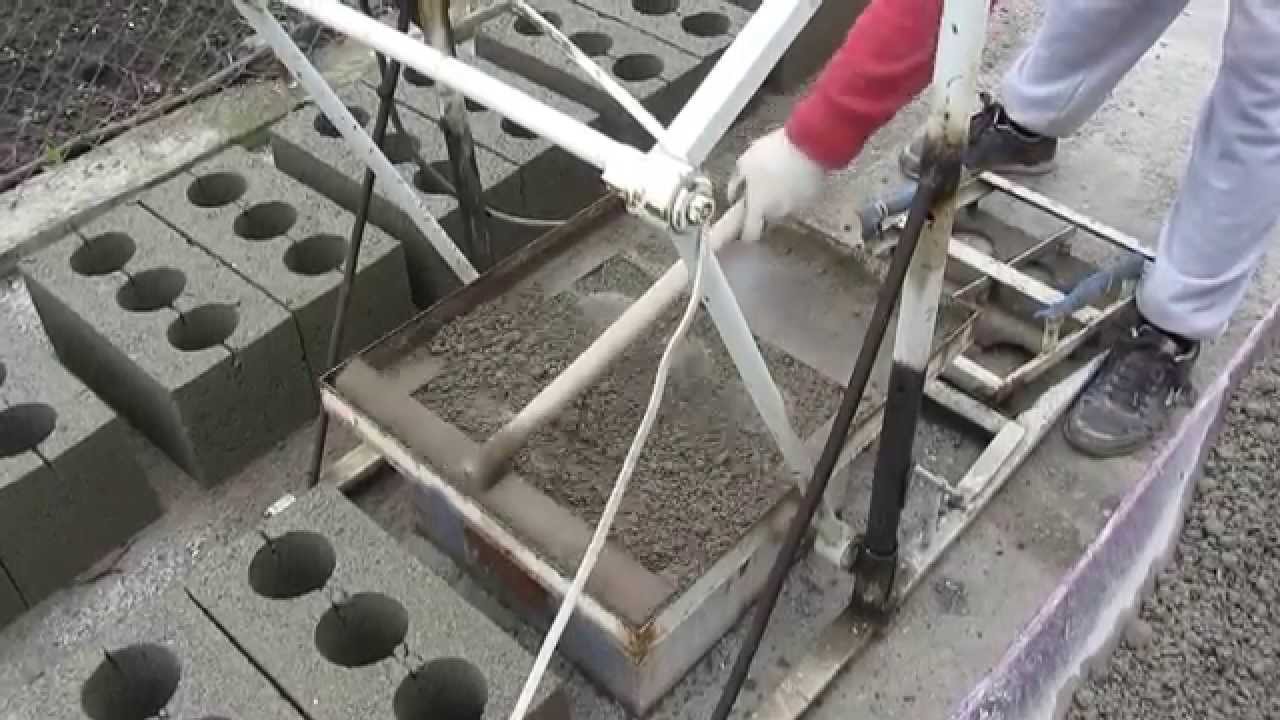Today, when block construction is relevant, a do-it-yourself block production machine is created quite simply using improvised materials. This technology is so economical that it allows you to fulfill all 3 main purposes in life for a man - to raise a child, a tree and build a house. Although, for the first two tasks, only desire and health are necessary.
Materials used in the manufacture of blocks
From time immemorial, the main building material was brick, but in recent years a method of building from blocks, often made at home, has been developed.
The possibility of using various components in the production of blocks allows you to select the most suitable composition for the climatic conditions of different regions. Homemade elements can be of any size, which greatly speeds up the construction process. The starting material for the production of building blocks is a mixture in the form of a thick dough. It must contain cement. To increase the strength and quality of products, cement of the highest grade (M400) is used. An indispensable component of the mixture is also water.
Do-it-yourself blocks can be made with the parameters that your building needs. As a filler, various materials are used, which are characterized by a low price and are disposed of as production waste, such as sawdust, shavings. The use of various slags, ash, annealing wastes of valuable fossils as the main component has been worked out.
The real find was the development of aerated concrete technology for the production of such building mixtures. Substances were found that, when combined with other components during the manufacture of building blocks, emitted gas bubbles.
They remained in the body of the block during drying. The result was a lightweight material with the hardness of stone and excellent ability to withstand external influences. In this way, aerated concrete blocks are made.
Various plasticizers are also added to the building blocks, which reduce chipping at the edges, facilitate cutting and prevent the formation of cracks during operation. At home, when making blocks with your own hands, ordinary washing powder is often used as a plasticizer.
Scheme of the machine
The basic principle of the device for the production of blocks is vibration, with the help of which the mixture is compacted in special forms. Then the blocks are removed and moved to dry. The whole structure resembles a vibrating machine.
 The vibrating table consists of two iron sheets, between which 4 rigid springs are fixed, which can always be found in the household. These can be springs taken from the shock absorbers of a moped, motorcycle, sofa springs, etc.
The vibrating table consists of two iron sheets, between which 4 rigid springs are fixed, which can always be found in the household. These can be springs taken from the shock absorbers of a moped, motorcycle, sofa springs, etc.
An electric motor is attached to the top sheet. Usually they try to make it work quietly and not vibrate, but in this case it’s the other way around. A part with displaced centers of gravity is attached to the protruding part of the motor shaft, which, when rotated, swings the motor and it shakes the iron sheet to which it is attached.
Vibration is achieved by oscillating a plane that serves to produce building blocks. Due to the rapid movement of the plane and fastening on springs, the amplitude and strength of vibration increase, as a result of which the mass in the forms is tightly compacted.
The vibrating table is mounted on a frame, which has good stability and rests securely on the ground. The bed can be equipped with all kinds of devices and levers to simplify the laying of the mortar and the excavation of finished products. The simplest design comes out when a sand block production machine is created. The remaining mixtures, which have an increased viscosity or fluidity, require special manufacturing conditions.
In the manufacture of concrete blocks going to lay the foundation, the frame is large. At home, you will also need a level space for further drying of products, which can last more than 2 weeks.